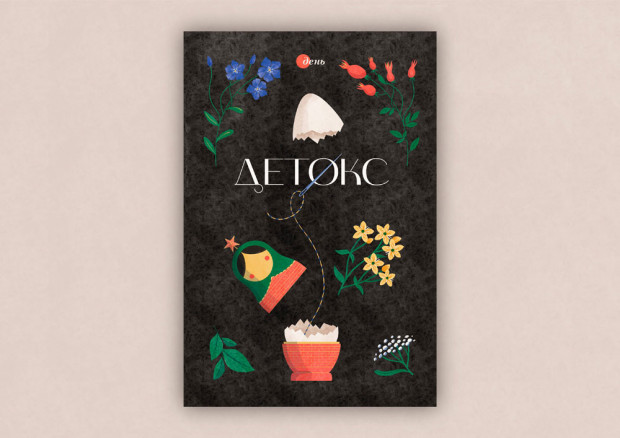How to make Europe remember?

“Ukraine had one of the most effective promotional campaigns, on which other countries spend millions of dollars. However, you failed to benefit from the results of that campaign,” a foreign diplomat told The Day, referring to the “image impact” of the Orange Revolution. For nearly two months information about Ukraine was in the international media spotlight. People wearing orange scarves in other countries were regarded as supporters of the revolutionary Ukrainians. A year has passed. It would be wrong to say that Ukraine has been forgotten. It has started being perceived in a somewhat different way. To be precise, comments and features concerning Ukrainian realities increasingly often betray overtones germane to the period before the revolution. This should perhaps inspire contemplation of “educational work,” which should be coordinated and well thought out. Paris recently hosted an image-building project known as “Days of Ukraine in Europe.” Among the participants was the First Lady of Ukraine, Kateryna Yushchenko. According to the organizers, this project is a follow-up to the “Days of Ukraine in Europe” that was launched in Paris on June 21 on the Champ de Mars, near the Eiffel Tower. The time slot chosen for the “Ukrainian days” rates a separate article. It is not difficult to assume that France, which is not experiencing the calmest period in its history (the rioting in the suburbs of Paris), is in no position to deal with Kyiv as the European choice. Be that as it may, we asked several distinguished Ukrainians how they would represent Ukraine in Europe.
Kostiantyn HRYSHCHENKO, ex-Minister of Foreign Affairs of Ukraine:
The international project “Days of Ukraine in Europe,” held in Paris, will help form a broader European concept of Ukrainian culture. Such projects must be carried out not only in the French capital. It’s very important that the First Lady took an active part in it. This corresponds to European standards of the role that the head of state’s wife plays in promoting her country’s positive image abroad. The president and his wife discharge a very important function: they open the door and create a broad political platform on which the entire spectrum of Ukrainian society is presented in countries that are principally important partners. However, without consistent, concrete work and a long- term strategy, including the designation of interactive mechanisms by governmental, nongovernmental, and business structures, it will not be possible to change the attitude to our country for the better.
Let us consider only two aspects: improving the investment climate and building a tourist and transport infrastructure in our country that would encourage Europeans to visit Ukraine and learn more about this country and our possibilities. We have just started working on improving the investment climate, and we can only dream about European standards of a tourist and transport infrastructure. Kyiv, for example, badly needs international-class hotels, let alone the regions with their serious potential for developing international business and tourism. International experience shows that the development of a tourist infrastructure gives a powerful impetus to the expansion of diversified contacts and is extremely important for the perception of our country abroad.
Today the main recurring theme of news agencies’ and world media reports on Ukraine is negative information concerning domestic political events, the sense of chaos in governmental structures, and systemic corruption. This nullifies all our attempts to create a positive image of our country abroad.
Ihor MITIUKOV, ex-Minister of Finance, former Ambassador of Ukraine to Great Britain:
We should start by showing Europe our hi-tech production capabilities. As it is, most of our partners who have shown an interest in Ukraine believe that we mostly make metal. Few people know Ukraine as a powerful aircraft- and ship-building country, a country with a very strong information technology potential. Few know about our motor-building, an industrial sphere in which we are one of the leaders. Of course, presenting Ukraine can start with social, cultural, or creative projects. Today, however, it is more important to bear in mind pragmatic things related primarily to attracting investments and partners. Therefore, the aspects I mentioned earlier must under any circumstances be included in the “Days of Ukraine in Europe” and the presentations of our achievements abroad.
Mykola ZHULYNSKY, director, Taras Shevchenko Institute of Literature of the National Academy of Sciences of Ukraine:
Historically, it so happens that our country is once again turning its face to Europe. Today it is probably not worth dwelling, for example, on Anna Yaroslavna, her marriage to the French king, her trip to France with a copy of the Bible written in Cyrillic. We must show Ukraine’s contemporary visage. This can be best achieved through culture and various creative projects. Culture has always been and will remain the calling card of any civilization. I believe that we are faced with an extremely complicated task. We can discuss the Middle Ages, the Baroque Age, education, the Kyiv-Mohyla Academy and the one in Ostroh — but I think that we should also show Europe our truly incomparable and unique Ukrainian icons with their regional peculiarities. It would be worthwhile to exhibit Ukrainian portraits. We ought to show Europe Ukrainian modern art from the late 19th to the early 21st centuries, where one finds distinct signals that the modern wave, especially in painting and sculpture, was in many ways Ukraine’s priority. Consider, for example, Vasyl Kandynsky or Alexander Archipenko. Thus, we would reveal to Europe that part of our cultural life that demonstrates a synthesis of national, folk, and professional art; art that I consider a unique achievement of Ukrainian national culture. It would also be worthwhile sending signals about Ukrainian theater, particularly the vertep, which in a way was a manifestation of folk theater. Or take our choral singing, which is also a unique page in the history of our national music culture. We could show them Ukrainian embroidered runners, rushnyky, which contain unique encoded information about the history that we can no longer read. To show Ukraine to the world is a difficult task. However, I would rather we sent signals instead of building up things. Such signals from our national culture and art could then be complemented by future presentations of Ukraine as a civilized entity in Europe.






